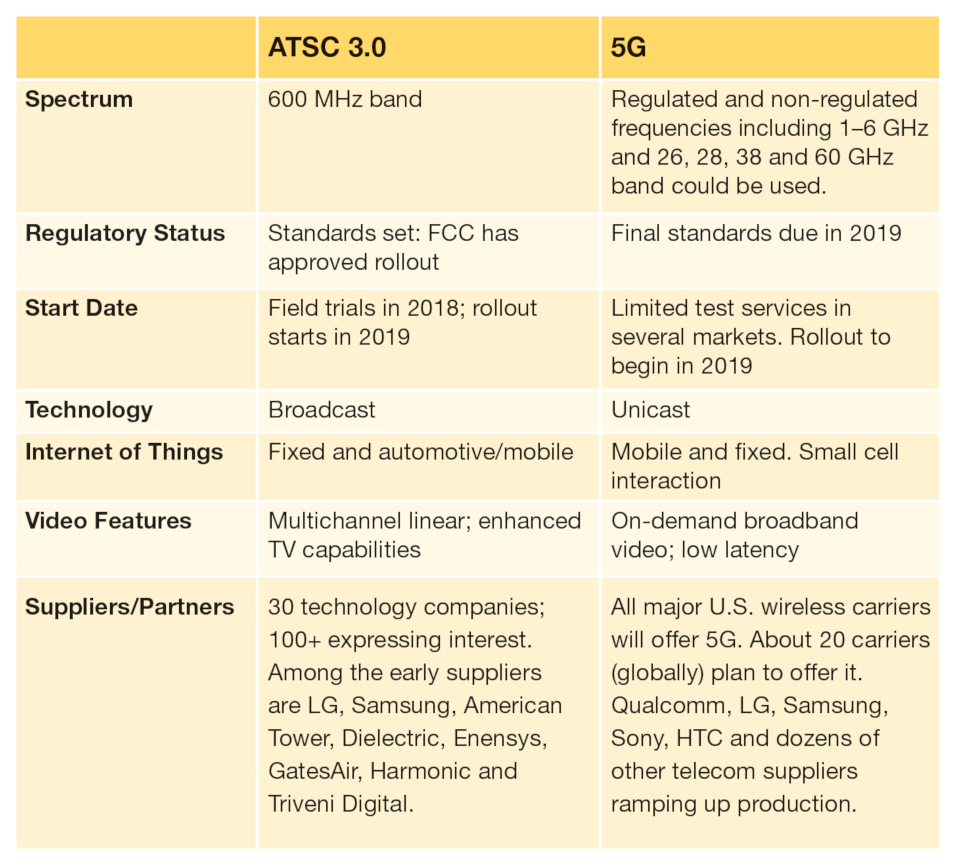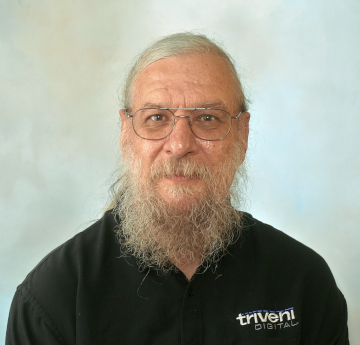5G and Next Gen TV: Timing or Technology?
BETHESDA, Md.—At a presentation to automotive executives near Detroit in late 2016, Advanced Television Systems Committee officials demonstrated how — in addition to traditional over-the-air broadcasting — ATSC 3.0 could also be used for telematics, infotainment and other services involving connected cars and autonomous vehicles.
The idea of using a broadcast standard for such uses is revolutionary but it’s anticipated that the emerging 5G wireless standard will be the dominant method for communicating with autonomous vehicles. On the other hand, the vastly increased bandwidth of 5G will give wireless carriers the ability to greatly expand their video offerings.
So could these two standards be headed for a “technology smackdown?” Not according to most broadcast executives.
The ever-upbeat Mark Aitken, vice president of advanced technology at Sinclair Broadcast Group, emphasized the ability of the technologies to work together.

“The new [ATSC 3.0] broadcast standard was designed with 5G convergence in mind,” he said at the event, emphasizing the internet protocol foundations of both technologies.
COLLABORATIVE POTENTIAL
In a follow-up discussion with TV Technology, Aitken expanded his thoughts: “5G is about heterogeneous networks and hybrid services,” he said, adding that the emerging technologies will give companies “the ability to align the data framing of 3.0 with LTE [Long-Term Evolution, the current 4G format] and 5G.”
The professional video industry's #1 source for news, trends and product and tech information. Sign up below.
Aitken and others have stressed the collaborative potential as both ATSC 3.0 and 5G technologies race to market on parallel courses in the coming months. Although there is competitive potential l— such as 5G’s broadband capability to deliver on-demand video services and 3.0’s prospect for transmitting voice messages over IP — broadcasters and suppliers are confident that the two technologies will both evolve into the market strongly. They emphasize that 3.0 is optimized for broadcast while 5G is tailored for unicast streaming and fixed wireless access.
“ATSC 3.0 and 5G address different use cases and scenarios,” acknowledged Mauricio Aracena, Media Standardization Manager at Ericsson. “Neither technology will interfere with the other. On the contrary, hybrid capabilities of ATSC — such as support for broadcast and broadband delivery — allows broadcasters to combine both 3.0 and 5G technologies for more personalized content.”
It’s still too early to determine just exactly what 5G will entail, according to Richard Chernock, chief science officer at Triveni Digital.

“We know exactly what 3.0 is, but don’t yet know what 5G is because it’s in the early part of its cycle,” he said. “5G is a collection of technologies that may work with each other.
“It has enormous bandwidth; its low latency [and other attributes] may work well together,” but other features are mutually exclusive, said Chernock, who until recently headed ATSC’s Technology Group 3, which guided the Next Gen TV standard to completion.
Chernock acknowledges that there are many “things you could do” to integrate 5G and 3.0 capabilities.
“There is flexibility in the 3.0 physical layer that you could include 5G,” he explained. He pointed out that the 3GPP (3rd Generation Partnership Project, a mobile industry technology standards group) is examining how 5G could move the wireless telecom business from its legacy one-to-one communications focus into a “one to more” role.
“We have different models,” Chernock added. “3.0 could do on-demand as a hybrid. Broadcast can cover it by parking content in the receiver, or you can go from broadcast to broadband and it can complement really well.”
FACING REALITIES
Technical optimism about the interplay between 5G and 3.0 is tempered by market realities. In particular, the ability for future 5G handsets, tablets and other customer equipment to receive over-the-air 3.0 signals is likely to be limited since the wireless carriers and handset makers are expected to continue their longstanding policy of not integrating OTA broadcast receivers into mobile devices. But ATSC 3.0’s strength in mobile reception could help get over that hurdle.
“You’re increasingly going to see the efficacy of 3.0 aligned with mobile, especially 5G,” Aitken said. “ATSC 3.0 is compatible with 5 MHz spectrum. We have demonstrated the ability of 3.0 in relationship to CDMA [Code-Division Multiple Access, the cellular technology used by Verizon and Sprint in the U.S.]. If you take that wide swath from the lowest frequencies and look across the spectrum, you have everything from 600 MHz spectrum to AWS4, where 3.0 can fit in.”
EQUIPMENT AVAILABLE, MARKET PRESENCE
Telecom and broadcast technology suppliers are evaluating when and how to plunge into both the 3.0 and 5G markets. Aitken says that prior to the NAB show, about 40 vendors offered 3.0 products. Now, he says, triple that number of suppliers are “talking about their product paths.”

“Vendors who have been diverted to other markets are coming back to broadcasting," Aitken said, “bringing with them lessons learned from their experiences in the telecom market.”
Triveni Digital’s Chernock agrees. “Encoder makers and others are agnostic,” he said.
Ericsson is one company with feet in both camps. The company is in the process of spinning off their business targeting broadcasters, TV operators and content owners into a new company, Ericsson Media Solutions, according to Matthew Goldman, senior vice president of technology for EMS.
“This was done at least in part to allow for more focused investments in media technologies independent from the networking business,” he said. “ATSC 3.0 is a new market in which Ericsson Media Solutions fully intends to provide solutions to broadcasters, and indeed initial solutions already are available.”
The next reality check will be with consumers who confront both technologies. Verizon has already started field testing of 5G in selected markets, and AT&T intends to do the same this year — even before final 5G standards are adopted, scheduled for 2019. Since 3.0 tests will be underway soon in Phoenix, Cleveland, Dallas and other cities, it is likely that some early adopters may encounter both technologies soon — albeit structured for different purposes.
Gary Arlen, a contributor to Broadcasting & Cable, NextTV and TV Tech, is known for his visionary insights into the convergence of media + telecom + content + technology. His perspectives on public/tech policy, marketing and audience measurement have added to the value of his research and analyses of emerging interactive and broadband services. Gary was founder/editor/publisher of Interactivity Report, TeleServices Report and other influential newsletters; he was the long-time “curmudgeon” columnist for Multichannel News as well as a regular contributor to AdMap, Washington Technology and Telecommunications Reports; Gary writes regularly about trends and media/marketing for the Consumer Technology Association's i3 magazine plus several blogs.

